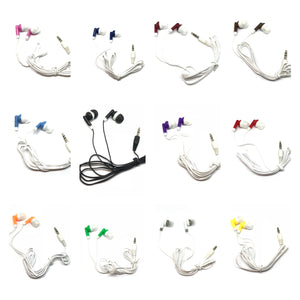Introduction
Violence in jails and prisons remains a critical concern for correctional professionals. Around the world and across the United States, correctional facilities witness frequent assaults, fights, and other violent incidents that threaten the safety of both inmates and staff. Recent trends suggest that this problem may be escalating: for example, in England and Wales there were over 30,000 recorded assaults in prisons in 2024 – a rate of 351 incidents per 1,000 prisoners, which marked an 11% increase from the previous year. Such statistics underscore that managing violence behind bars is an ongoing challenge. This essay examines the scope and causes of jail and prison violence, the risks it poses to staff and inmates, and strategies being implemented or recommended to improve safety in correctional environments.
Figure: Aerial view of New York’s Clinton Correctional Facility (Dannemora, NY). In prisons like this, managing violence and ensuring safety is an ongoing challenge. Correctional facilities worldwide experience thousands of violent incidents every year – from inmate-on-inmate altercations to attacks on staff. Such violence can erupt in crowded dormitories, recreation yards, or even segregation units, underscoring the pervasive nature of the problem.
Scope and Recent Trends of Violence
Violence within correctional facilities takes many forms, including prisoner-on-prisoner assaults, prisoner attacks on staff, riots, gang-related violence, and sexual assaults. Data from recent years highlight the scale of the issue. In the United States, many state prison systems are reporting record-high levels of violence. For instance, New York State documented 2,450 assaults by inmates on other inmates and 1,760 assaults on staff in the first 10 months of 2024 – surpassing the previous year’s records and indicating a continuing rise. The New York prison officers’ union attributes this surge partly to severe staffing shortages, noting that the state’s prison population (33,516 inmates) greatly outnumbers the 14,276 correctional officers, the lowest staffing level in decades. The situation is not unique to New York; many jurisdictions report that violence in prisons has increased in the aftermath of the COVID-19 pandemic disruptions and ongoing resource strains. Even the federal prison system, which has a more stable inmate population, saw 872 physical assaults against staff in 2023, resulting in several serious injuries. These numbers illustrate that jails and prisons remain dangerous environments, and in some cases the danger is worsening.
International data echo similar concerns. In England and Wales, prison violence has trended upward recently – the Ministry of Justice reports that in the 12 months up to December 2024 there were 30,490 total assaults in custody (351 per 1,000 inmates). Notably, assaults on staff in those facilities reached 10,605 incidents in the same period – a rate of 122 per 1,000 prisoners – which is a record high and 13% higher than the previous year. Approximately 11% of all these assaults were categorized as “serious,” involving severe injuries. Rising inmate mortality rates also point to the increasing lethality of prison environments: in U.S. state prisons, the rate of deaths by homicide, suicide, or substance intoxication climbed significantly in the late 2010s. In fact, 143 incarcerated people were victims of homicide in U.S. state and federal prisons in 2019, a marked increase compared to a decade prior. Such trends underscore that without effective interventions, correctional institutions can become increasingly violent and “deadly” places.
Causes and Nature of Violence
Prison and jail violence stems from a complex interplay of environmental, organizational, and individual factors. Overcrowding is often cited as a fundamental cause. When too many people are crammed into limited space, tensions rise and minor disputes can quickly escalate into fights. Many prison systems have not expanded capacity at the pace of inmate population growth, leading to crowded dormitories and cellblocks. Overcrowding also strains resources and reduces the ability of staff to monitor and intervene, thus creating a volatile atmosphere. Alongside overcrowding is the issue of understaffing of correctional officers. Inadequate staffing means fewer eyes on prisoners and slower response times to altercations. Prisoner advocacy groups and officer unions alike have warned that chronic officer shortages contribute to more frequent and brazen violent incidents. Officers themselves report that mandatory overtime and burnout from understaffing can weaken their alertness and response, further exacerbating safety issues.
Another major factor is the presence of gangs and organized criminal groups behind bars. Prison gangs exert influence over inmate populations and often perpetuate violence as a means of control or rivalry. Research by the U.S. National Institute of Justice noted that about 200,000 of the 1.5 million people incarcerated in the U.S. are affiliated with gangs, and these groups are responsible for a disproportionate amount of prison misconduct and violence. Gang rivalries can lead to targeted assaults and riots, and gang-imposed “codes” may encourage retaliatory violence that undermines institutional discipline.
Contraband and illicit economies within prisons also fuel violence. The trade in drugs, cell phones, or weapons creates debts and disputes among inmates. Fights often break out over unpaid drug debts or competition for black-market profits. The smuggling of weapons (such as improvised knives, or “shanks”) dramatically increases the potential for deadly encounters. Efforts to curb contraband (through searches, body scanners, and K9 units) are ongoing in many facilities to address this driver of violence.
The mental health crisis in correctional institutions is another contributing cause. A large portion of incarcerated individuals suffer from mental illnesses or substance use disorders, conditions which, if untreated, can lead to erratic or aggressive behavior. According to a Bureau of Justice Statistics survey, about 43% of state prisoners (and 23% of federal prisoners) have a history of mental health problems. Many jails, in particular, have effectively become holding centers for people with serious mental illness due to the lack of community treatment facilities. Individuals experiencing psychosis, severe depression, or withdrawal from drugs may be prone to outbursts or may be victimized by others. Without adequate psychiatric care and crisis intervention, these inmates can become involved in violent incidents either as aggressors or as vulnerable targets. Correctional staff, for their part, face the challenge of managing these behaviors often without sufficient training in mental health de-escalation.
The nature of violence in jails and prisons can range from one-on-one assaults to large-scale disturbances. Common manifestations include spontaneous fights in housing units, group melees orchestrated by gangs, attacks on officers (e.g. an inmate striking or stabbing a guard), and sexual violence. The Prison Rape Elimination Act (PREA) prompted national surveys that revealed roughly 3–4% of inmates report experiencing sexual victimization in a given year. These incidents might involve inmate-on-inmate rape or sexual assault, as well as staff sexual misconduct, and they often go underreported due to fear of retaliation. Even non-physical forms of violence and intimidation are common – extortion, threats, and coercion contribute to a climate of fear. In some notorious cases, unchecked violence has led to prison uprisings and riots. The risk of violent riots increases when systemic issues like poor living conditions, perceived injustices, or lack of programming worsen inmates’ frustration. Essentially, any factor that increases stress, desperation, or opportunities for conflict in a facility can spark violence.
Risks to Staff and Inmates
The pervasive violence in correctional settings creates severe risks for everyone behind the walls. Correctional officers and staff face one of the most dangerous work environments of any profession. Assaults on staff can result in serious injuries or even death. In one high-profile incident in 2024, a correctional officer was stabbed in the head and neck by an inmate at an Indiana prison – a grim reminder of the ever-present hazards officers confront. Nationwide, hundreds of officers are injured by inmate assaults each year. In federal prisons alone, staff were physically assaulted 872 times in 2023, and state prison systems report many more incidents. The injury rates tell the story: correctional officers experienced 254 work-related injuries per 10,000 full-time employees due to assaults in 2011, which was over 36 times higher than the rate for all U.S. workers (7 per 10,000). Being a correctional officer means constantly managing the threat of violence – whether breaking up fights, being targeted by inmates with homemade weapons, or facing collective unrest. Beyond the physical injuries, the psychological toll on staff is immense. Working in an environment where “the aftermath of violence is commonplace” leads to chronic stress, burnout, and high rates of post-traumatic stress disorder (PTSD) among officers. It is perhaps not surprising that one study found correctional officers’ suicide rates are 39% higher than those of the general working population, likely attributable in part to the intense and dangerous conditions they endure daily.
Inmates likewise are at constant risk of victimization. In a crowded jail or prison, any prisoner – whether serving time for a minor offense or a serious crime – may become a target of aggression. Vulnerable populations such as younger inmates, those with mental disabilities, or those who are not gang-affiliated often suffer physical assaults or exploitation. Inmate-on-inmate violence leads to injuries ranging from bruises and broken bones to life-threatening stab or puncture wounds. Each year, a disturbing number of inmates lose their lives to homicide behind bars. Even those not directly assaulted are affected; living in a high-violence environment causes severe stress, anxiety, and trauma. Many incarcerated persons report feeling the need to be constantly hyper-vigilant for their own safety, which can exacerbate mental health problems or lead them to preemptively join gangs for “protection,” perpetuating the cycle of violence.
There are also indirect consequences of rampant violence that affect safety. For example, when violence against staff becomes common, it can lead to staffing crises (officers quitting or taking sick leave) that further reduce oversight and make conditions more dangerous for everyone. High levels of violence also disrupt rehabilitative programs and daily routines; facilities may respond with frequent lockdowns, which in turn heighten tensions and idleness among inmates. In short, unchecked violence creates a self-reinforcing feedback loop of insecurity, undermining the core correctional goals of safety, order, and rehabilitation.
Strategies to Reduce Violence and Improve Safety
Correctional systems are actively seeking and implementing strategies to curb violence and foster a safer environment for both staff and inmates. These strategies range from immediate security measures to long-term systemic reforms:
-
Increasing Staffing and Training: Ensuring adequate numbers of well-trained correctional officers is a top priority. Many jurisdictions are boosting recruitment, offering pay raises, and improving training programs. For example, New York’s prison agency in 2024 created a special recruiting unit and raised starting salaries to address its officer shortage. More officers on duty means better supervision and quicker response to budding conflicts. Training in de-escalation techniques, crisis intervention (especially for handling mentally ill individuals), and communication can equip staff to defuse tensions before they explode into violence. Some prisons now train select officers as crisis negotiators or special response team members to professionally manage riots or hostage situations, thereby reducing harm.
-
Effective Classification and Segregation: Careful classification of inmates can separate those most prone to violence (or at risk of victimization) from the general population. Modern classification systems use data on an inmate’s history and behavior to determine appropriate housing. High-risk or gang-affiliated inmates may be placed in higher-security units to limit their opportunities to prey on others. Many systems employ restrictive housing (solitary confinement) as a tool to isolate the most dangerous individuals or disrupt gang influence – though this practice is controversial and must be balanced against the negative psychological effects of isolation. Some states are exploring targeted segregation that rotates gang leaders out of general population temporarily or transfers them to break up networks. Conversely, protective custody units are used to safeguard inmates who are likely targets of violence (such as informants, sex offenders, or LGBTQ inmates).
-
Contraband Control: Reducing the flow of weapons and illicit drugs into facilities can remove some of the fuel for violence. Prisons are investing in more advanced screening technology – for instance, full-body scanners at entrances to detect hidden contraband, expanded use of K9 units trained to sniff out drugs, and more frequent surprise searches of cells and mail. By cutting off the supply of knives, razors, and narcotics, officials aim to reduce the number of violent incidents stemming from those items. Some facilities have also installed better surveillance cameras and even deployed drone-detection systems (to stop aerial smuggling) to bolster security. In New York, as noted, the governor supported adding body scanners in prisons and other anti-contraband measures as part of a violence reduction initiative.
-
Improving Conditions and Facility Design: There is growing recognition that humane living conditions can lead to safer facilities. Extreme punitive environments and neglect of basic needs can aggravate aggression. Seemingly simple improvements – like controlling indoor climate and providing decent nutrition – can make a difference. Research indicates that rising temperatures correlate with upticks in prison violence, yet many prisons (especially in the southern U.S.) lack air conditioning and become unbearably hot in summer. Installing climate control or at least mitigating extreme heat can reduce heat-induced tensions. Likewise, diet matters: studies have found that poor nutrition is linked to increased aggressive behavior, and providing inmates with healthier meals and sufficient calories may help reduce irritability and violence. Some pioneering research in the UK even showed that vitamin supplements and a balanced diet led to measurable declines in antisocial behavior among prisoners. Additionally, modern prison design emphasizes layouts that enable better supervision (such as direct-supervision jails where officers are in the housing unit rather than watching through bars). Eliminating dark, isolated corners and improving lighting can deter assaults. Access to basics like clean facilities, exercise, and sunlight also improves mood and can indirectly reduce violence born of frustration.
Figure: A rehabilitative housing unit for young adults emphasizes dignity, mentoring, and programming – creating a calmer atmosphere. Facilities that implement such therapeutic environments report notable declines in violent incidents. In these units (like the Restoring Promise program co-led by the Vera Institute), incarcerated young men spend much of the day outside their cells in classrooms and community areas, guided by older inmate mentors. This approach builds positive relationships and life skills that contrast sharply with the hostility of typical cellblocks. As a result, both residents and staff in these units experience improved safety and reduced stress.
-
Rehabilitative Programs and Culture Change: Perhaps the most promising strategies are those that transform the prison culture from within. Providing inmates with constructive activities, hope, and avenues to address conflicts can significantly lower violence. Educational and vocational programs keep inmates productively occupied and give them tools for coping. Indeed, facilities that expand schooling, vocational training, and counseling often see improved behavior and fewer violent infractions. Cognitive-behavioral classes (anger management, conflict resolution, etc.) directly target the root causes of violent behavior. Some prisons have launched violence reduction units or initiatives focusing on young adults or high-risk inmates. For example, the “Restoring Promise” initiative mentioned earlier established a specialized unit with a nurturing environment and peer mentors; this model resulted in a 73% reduction in violent infractions among its young adult participants, while 89% of the unit’s staff reported a better quality of work life. Such results are extremely encouraging. Other innovative programs include gang renunciation and reconciliation programs, wherein gang members who wish to leave gang life can undergo therapy and transition to general population, breaking the cycle of gang-led violence. Restorative justice programs have even been piloted, allowing offenders to mediate conflicts and take responsibility in structured dialogue rather than through retaliation.
-
Policy and Oversight Reforms: At an administrative level, prisons are refining policies to discourage violence. This includes ensuring there are firm consequences for assaults (e.g. swift prosecution of inmates who attack staff or others, loss of privileges for misconduct, etc.), while also avoiding overly harsh disciplinary systems that might breed resentment. Some jurisdictions, under consent decrees or external pressure, have improved use-of-force policies and training, to both prevent staff abuses (which can trigger inmate violence) and ensure staff use force effectively but judiciously when breaking up fights. Independent oversight bodies and reporting mechanisms (like hotlines for inmates to report threats or abuse) can identify patterns of violence and compel authorities to act. Full compliance with PREA standards – including staff training on sexual abuse prevention, screening of vulnerable inmates, and victim support – is another important component to make prisons safer from sexual violence.
-
Decarceration and Diversion: Finally, a broader strategy to reduce violence is to simply reduce the incarcerated population where safely possible. Decreasing overcrowding through measures like parole reforms, diversion of low-level offenders to community programs, and bail reform for pretrial detainees can directly cut down on tension and improve staff-to-inmate ratios. On any given day in the U.S., more than 400,000 people are held in jails pretrial (not yet convicted) – many of whom could be supervised in the community. By reserving incarceration for those who truly need to be incapacitated and investing in mental health and substance treatment facilities in the community, correctional systems can avoid housing so many people in high-stress jail environments where violence often feels “unavoidable”. The concept of “decarceration = safer facilities” gained traction as some studies showed that downsizing prison populations did not correspond to increased crime in the community, but did alleviate some pressures inside prisons.
Conclusion
Violence in jails and prisons is a multifaceted problem that directly affects the safety, health, and morale of both inmates and correctional staff. The latest statistics as of 2024 reveal alarmingly high rates of assaults and rising trends in many jurisdictions, reinforcing what correctional workers know from experience: the threat of violence behind bars is constant. Causes such as overcrowding, understaffing, gang activity, untreated mental illness, and poor conditions create an environment where conflicts can turn deadly in an instant. For correctional employees, this means working under dangerous conditions with high risks of injury, which in turn impacts their well-being and ability to maintain order. For incarcerated individuals, it means serving time under perpetual fear, which hinders rehabilitation and can lead to further trauma or violent behavior.
The good news is that correctional leaders and policymakers are not powerless in the face of this challenge. A combination of immediate security improvements (more staff, better training, and technology) and long-term reforms (better conditions, rehabilitative programming, and population reduction) is being pursued to make facilities safer. Early results from innovative programs – like specialized housing units focused on dignity and mentorship, or education initiatives that engage inmates – demonstrate that violence is not an inevitable part of incarceration and can be significantly reduced. By addressing the root causes of violence and fostering a more humane and orderly environment, prisons and jails can protect the people who live and work within them. This not only prevents injuries and deaths in the short term but also contributes to better outcomes upon release, since a safer prison is more conducive to rehabilitation.
For professionals working in corrections, understanding these dynamics is crucial. It allows for informed advocacy for the resources and policies needed to enhance safety. It also helps in developing a security-minded yet compassionate approach on the job – recognizing that each act of violence prevented is a victory that makes the facility safer for staff and inmates alike. In summary, violence in correctional facilities remains a serious concern in 2025, but through concerted effort and smart strategies, there is hope that prisons and jails can become significantly safer environments in the years ahead.
Sources: Recent government reports, news articles, and research studies were used to provide current statistics and insights, including data from the Bureau of Justice Statistics, the UK Ministry of Justice, and analysis by prison reform organizations. All information has been cited in the text to acknowledge these sources.






